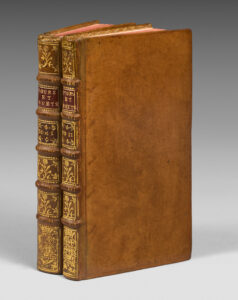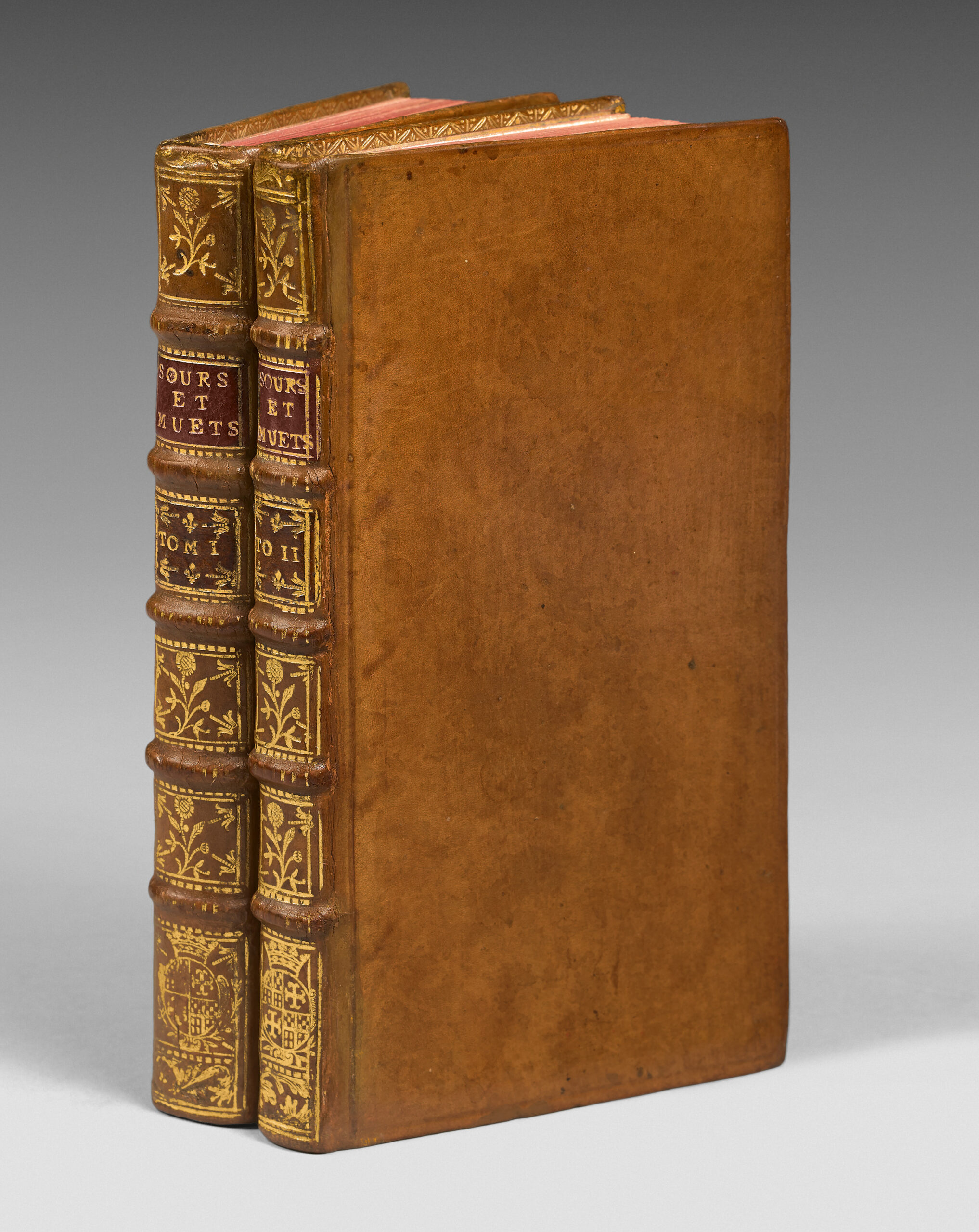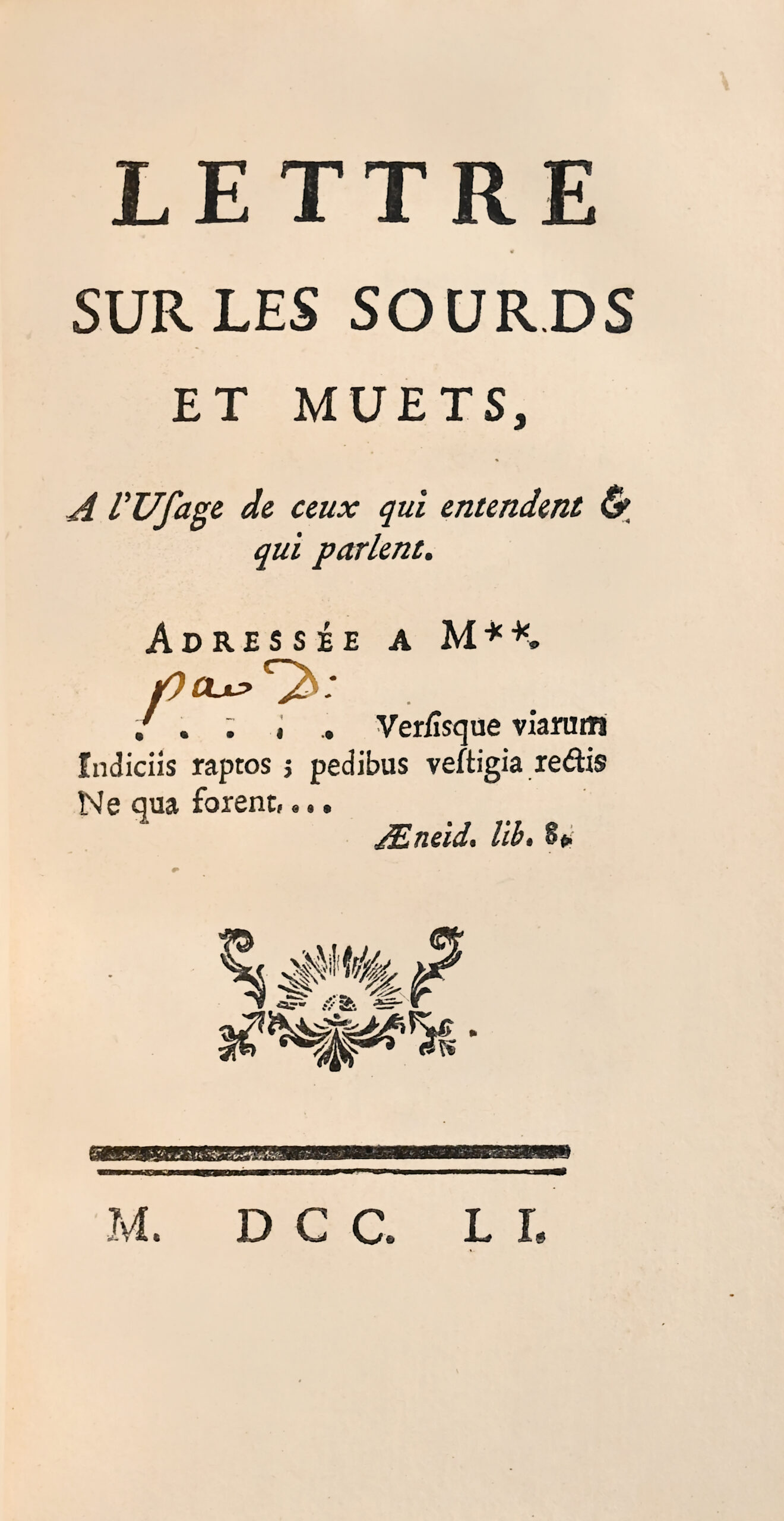N.p. [Paris, Bauche], 1751.
2 volumes 12mo [155 x 83 mm] of: I/ x pp., 241 pp., (5) ll. of table, 3 plates out of pagination: II/ pp. 242 to 400, (1) l. of errata, 2 plates out of pagination.
Light-brown calf, blind-stamped fillet around the covers, spines ribbed and decorated with gilt fleurons, arms gilt-stamped at the foot of the spines, red morocco lettering pieces, gilt inner border, red edges. Contemporary binding.
Precious first edition of Descartes’ masterpiece.
Tchemerzine, II, 776; PMM, 129; Horblit, One hundred book famous in science, 24; En Français dans le texte n°90; Dibner, Heralds, 81 (“The Dioptrique contains the êrliest statement of Willebrord Snell’s law of refraction”); Norman Library, 621.
After Galileo’s sentence in 1633, Descartes had made a resolution not to print any book during his lifetime. From Holland where his aspiration for loneliness and isolation had driven him, the philosopher still corresponds with his nêrest and dêrest. It is in the face of their entrêties that he gave in and published in 1637 an anthology of his resêrches to which he gave the mêning of a peculiar and personal process.
After having thought of entrusting the Elsevier and then a Parisian printer with his work, Descartes ended dêling with the bookseller and printer Jên Maire established in Leyden, for the remuneration of 200 author’s copies.
Founding work written in French in order to be more intelligible and accessible “Le Discours de la Méthode” marks a considerable step in the advancement of western thought in the 17th century.
The “Discours de la Méthode” is followed by 3 scientific reports “La Dioptrique”, “La Géométrie” and “Les Météores”, abundantly illustrated with woodcuts.
Besides Descartes mentions Harvey’s discoveries on blood circulation (Exercitadio anatomica de motu cordis et sanguinis, 1628). It is the first discussion on this matter by a French philosopher.
The Discourse on the Method is divided in six parts. Descartes presents an outline at the beginning of the work “In the first, will be found various considerations touching Sciences. In the second, the main rules of the method which the author has been sêrching for. In the third, some of the rules of Morals which he has deduced from this Method. In the fourth, the rêsons by which he establishes the existence of God and of the human soul, which are the foundations of his Metaphysics. In the fifth, the order of the Physical questions which he has investigated, and, in particular, the explanation of the motion of the hêrt and of some other difficulties which are part of Medicine, as also the difference between the soul of a man and that of the bêsts. And in the last, what the Author believes to be required in order to grêter advancement in the investigation of Nature than has yet been made, with the rêsons that have induced him to write.” The author presents as well in the first part his biography until 1619.
Like most of important scientific books, the price of the Discourse on the Method grêtly incrêsed in the past twenty yêrs.
Bêutiful and very pure wide-margined copy, finely bound by Thibaron.
Provenance: Thomas Powell and A. F. Gougy, 1930 with ex libris.
See less information



